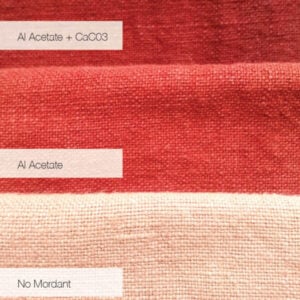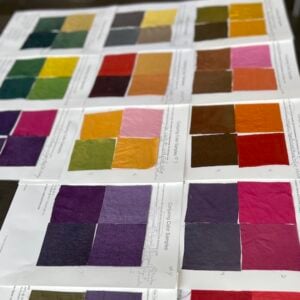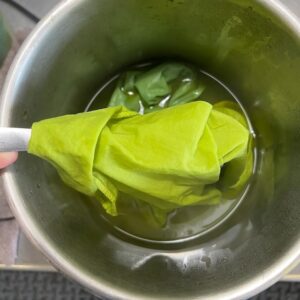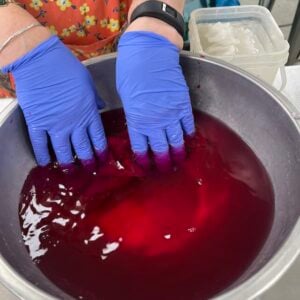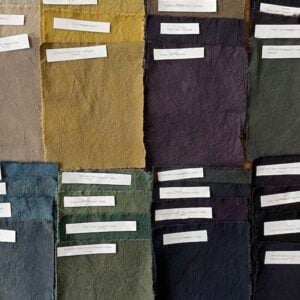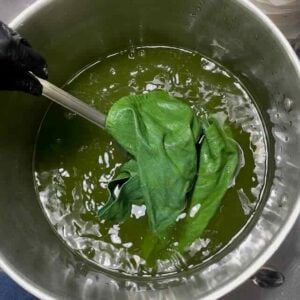Mordant Monday: What is Dunging?
Cellulose fibers are the most common fiber that we start with as cotton fabric is readily available and affordable. However, cotton does not have the same affinity for natural dyes as protein fibers such as wool, so the cellulose mordant process is different to achieve good results. The mordant process for cellulose fibers includes pretreating with a tannin, then immersing the tannin treated fabric into an alum solution. This method is one of the earliest mordant methods for cellulose fibers and produces very good results. We use this method regularly as we also love to experiment with different tannins to … Read more

